 Let’s kick this off with Mad Max by Avalanche Studios and Warner Bros. Games. To start, players praised its brutal car fights, thick desert vibe, and Arkham‑style ground combat with extra gore. Reviewers rave about harpooning doors and engines. In fact, they say it feels like Fury Road in game form. Even so, complaints about grind don’t hurt the fun too much. As someone who loves fresh secrets, I dug every hidden scrap site and side camp.
Let’s kick this off with Mad Max by Avalanche Studios and Warner Bros. Games. To start, players praised its brutal car fights, thick desert vibe, and Arkham‑style ground combat with extra gore. Reviewers rave about harpooning doors and engines. In fact, they say it feels like Fury Road in game form. Even so, complaints about grind don’t hurt the fun too much. As someone who loves fresh secrets, I dug every hidden scrap site and side camp.
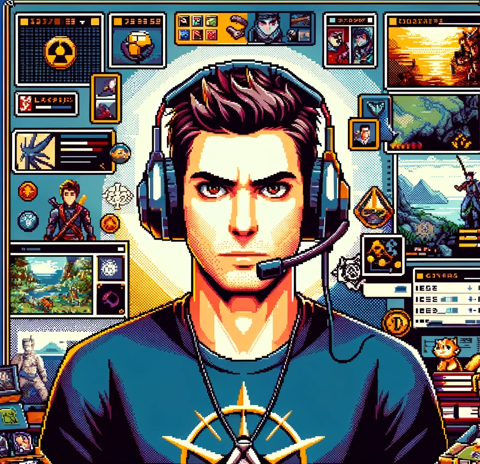 That said, Avalanche Studios built a huge open world. They used their Avalanche Engine, first seen in Just Cause, and tuned it for this game. Players note nearly 80 hours to finish at 100%. Along the way, you chase collectibles, strongholds, car parts, and even optional Fury Road filters. You unlock upgrades by farming scrap from bandit convoys. Although some folks called the map a bit repetitive, it stays fun when you track every stronghold and upgrade every vehicle part.
That said, Avalanche Studios built a huge open world. They used their Avalanche Engine, first seen in Just Cause, and tuned it for this game. Players note nearly 80 hours to finish at 100%. Along the way, you chase collectibles, strongholds, car parts, and even optional Fury Road filters. You unlock upgrades by farming scrap from bandit convoys. Although some folks called the map a bit repetitive, it stays fun when you track every stronghold and upgrade every vehicle part.
 The combat shines. Specifically, ground fights borrow from Rocksteady’s Arkham series, with heavy hits and counters. Vehicle fights mix Just Cause‑style grappling with Borderlands‑like weapon mods. You swap engines, chassis, and armor on the fly. For example, that push‑forward harpoon grabs tires, then you blast with your flamethrower. These mechanics blend racing and brawling in one package. Overall, it fits the post‑apocalyptic genre while pushing it into fresh territory.
The combat shines. Specifically, ground fights borrow from Rocksteady’s Arkham series, with heavy hits and counters. Vehicle fights mix Just Cause‑style grappling with Borderlands‑like weapon mods. You swap engines, chassis, and armor on the fly. For example, that push‑forward harpoon grabs tires, then you blast with your flamethrower. These mechanics blend racing and brawling in one package. Overall, it fits the post‑apocalyptic genre while pushing it into fresh territory.
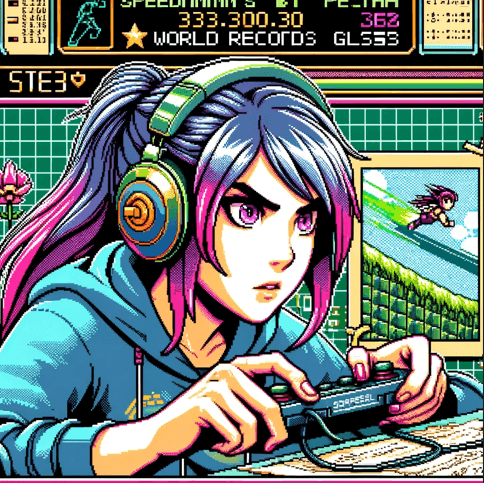 From my speedrun angle, the harpoon skip is gold. By leveraging it, you can snag key vehicles without combat and skip long drive times by boosting custom engines. You can even skip some cutscenes and reach the Plains of Silence in under an hour. Typically, many routes revolve around farming scrap early. That drop‑boost glitch at Scrotus’ stronghold shaves seconds off your run. Worth noting: Avalanche Studios shut down the online mode on October 31, 2020, so all runs now focus on single‑player timing.
From my speedrun angle, the harpoon skip is gold. By leveraging it, you can snag key vehicles without combat and skip long drive times by boosting custom engines. You can even skip some cutscenes and reach the Plains of Silence in under an hour. Typically, many routes revolve around farming scrap early. That drop‑boost glitch at Scrotus’ stronghold shaves seconds off your run. Worth noting: Avalanche Studios shut down the online mode on October 31, 2020, so all runs now focus on single‑player timing.
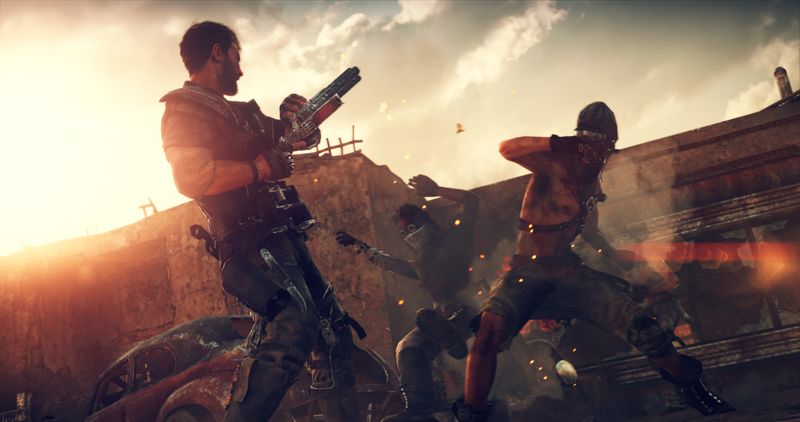
 Let’s talk story. At its core, Max wants peace in the Plains of Silence. You meet Chumbucket, who fixes cars and cracks jokes. Throughout, the plot hits you with desperate survival vibes—you feel every journey across the wastes. Avalanche Studios said in interviews they aimed for simple yet emotional storytelling. To achieve this, they kept lore in audio logs and scarce cutscenes. This pacing fits the lonely hero vibe.
Let’s talk story. At its core, Max wants peace in the Plains of Silence. You meet Chumbucket, who fixes cars and cracks jokes. Throughout, the plot hits you with desperate survival vibes—you feel every journey across the wastes. Avalanche Studios said in interviews they aimed for simple yet emotional storytelling. To achieve this, they kept lore in audio logs and scarce cutscenes. This pacing fits the lonely hero vibe.
 The world‑building shines in the skyboxes. You see rolling dust storms and abandoned towers. With muted browns and bright sky blues, the art team sets a stark yet beautiful mood. You explore bunkers, junkyards, and salt flats. Impressively, the engine handles long draw distances without big slowdowns on PC and consoles. Granted, a few drops happen during big explosions, but it stays solid.
The world‑building shines in the skyboxes. You see rolling dust storms and abandoned towers. With muted browns and bright sky blues, the art team sets a stark yet beautiful mood. You explore bunkers, junkyards, and salt flats. Impressively, the engine handles long draw distances without big slowdowns on PC and consoles. Granted, a few drops happen during big explosions, but it stays solid.
 Sound design in Mad Max plays a huge role. The engine roars in your ears, and you barely hear music during drives. As a result, that silence highlights every engine growl and gunshot. I loved the shotgun blasts in Fury Mode. Moreover, enemy war cries hike tension, and voice acting feels gritty and on point. Max barely speaks, yet you feel his pain through facial animations.
Sound design in Mad Max plays a huge role. The engine roars in your ears, and you barely hear music during drives. As a result, that silence highlights every engine growl and gunshot. I loved the shotgun blasts in Fury Mode. Moreover, enemy war cries hike tension, and voice acting feels gritty and on point. Max barely speaks, yet you feel his pain through facial animations.
 Audio cues help in speedruns. You hear scrap crates break before you see them. Likewise, harpoon hits give a snap sound that tells you the grapple landed. You can optimize routes by listening for camp alarm sounds. Ultimately, those audio hints lock in faster runs.
Audio cues help in speedruns. You hear scrap crates break before you see them. Likewise, harpoon hits give a snap sound that tells you the grapple landed. You can optimize routes by listening for camp alarm sounds. Ultimately, those audio hints lock in faster runs.
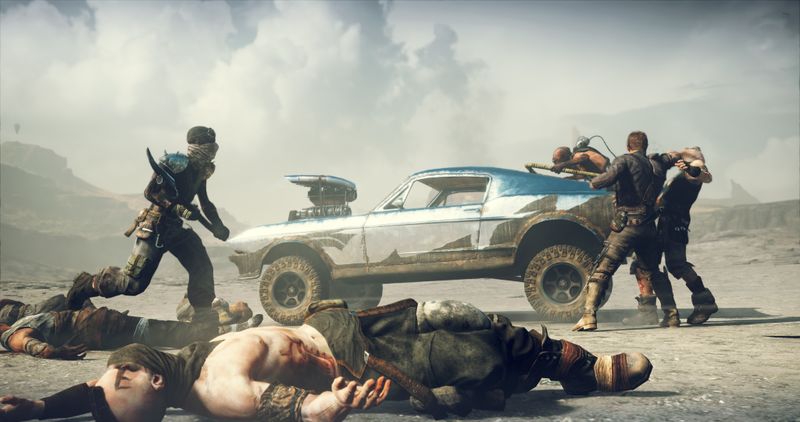
 Characters stand out. Max feels worn and silent, while Chumbucket grows from sidekick to master mechanic. Meanwhile, villains like Scrotus lead unique war parties. Avalanche Studios packed each faction with its own style and weapons. Consequently, that adds more variety to missions.
Characters stand out. Max feels worn and silent, while Chumbucket grows from sidekick to master mechanic. Meanwhile, villains like Scrotus lead unique war parties. Avalanche Studios packed each faction with its own style and weapons. Consequently, that adds more variety to missions.
 Challenge varies. Main camps feel balanced, but some side missions spike the difficulty. User feedback mentions a smooth curve until Act Four hits with tougher bosses. You can switch on “Fury Mode” for extra challenge. You can also turn off HUD for a pure scavenger’s experience.
Challenge varies. Main camps feel balanced, but some side missions spike the difficulty. User feedback mentions a smooth curve until Act Four hits with tougher bosses. You can switch on “Fury Mode” for extra challenge. You can also turn off HUD for a pure scavenger’s experience.
 Combat stays fair if you use counters and upgrades well. As you mix armor mods and engine boosts, you handle enemies faster. That depth appeals to hardcore players. You can tune cars for top speed or heavy weapons. That adds real strategy.
Combat stays fair if you use counters and upgrades well. As you mix armor mods and engine boosts, you handle enemies faster. That depth appeals to hardcore players. You can tune cars for top speed or heavy weapons. That adds real strategy.
 For newcomers, Mad Max has an easy mode in early chapters. That helps new players learn controls. After that, you can ramp up the challenge. Speedruns thrive on skill checks like perfect parries and drive-by takedowns.
For newcomers, Mad Max has an easy mode in early chapters. That helps new players learn controls. After that, you can ramp up the challenge. Speedruns thrive on skill checks like perfect parries and drive-by takedowns.
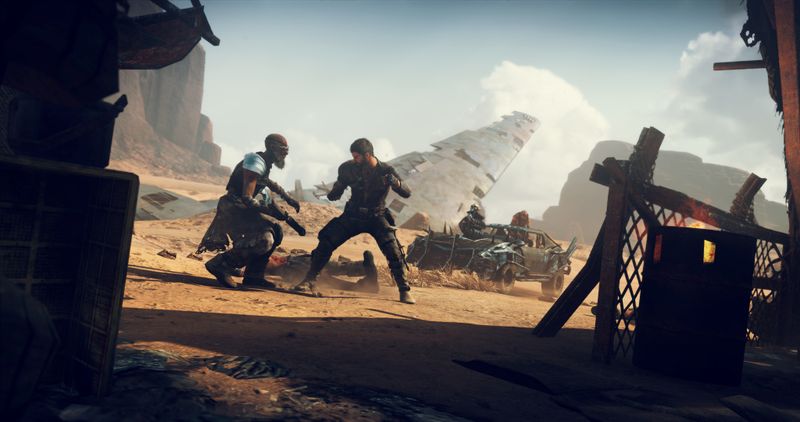
 Replay value proves strong in Mad Max. You can chase 100% completion, beat time trials, and test car builds. The world stays fun for new tactics. Players often return to try Rusted Scourge and Stinger Challenge modes. Many fans still hit leaderboards years later.
Replay value proves strong in Mad Max. You can chase 100% completion, beat time trials, and test car builds. The world stays fun for new tactics. Players often return to try Rusted Scourge and Stinger Challenge modes. Many fans still hit leaderboards years later.
 Compared to Just Cause 3 or Borderlands, Mad Max’s replay loop feels more grounded. You remix upgrades to fight camps differently. That keeps your second run fresh.
Compared to Just Cause 3 or Borderlands, Mad Max’s replay loop feels more grounded. You remix upgrades to fight camps differently. That keeps your second run fresh.
 It also compares well to RAGE. Each game nails vehicular chaos, but Mad Max adds more depth in car customization and hand-to-hand fights.
It also compares well to RAGE. Each game nails vehicular chaos, but Mad Max adds more depth in car customization and hand-to-hand fights.
 For me, Mad Max beats Borderlands for speedruns. The map is tighter, you skip more, and you rocket-boost for faster times.
For me, Mad Max beats Borderlands for speedruns. The map is tighter, you skip more, and you rocket-boost for faster times.

 Final thoughts? Mad Max stands out for tight vehicle combat, strong world design, and solid pacing. It’s a deep sandbox with simple yet effective story beats. Avalanche Studios crafted a game that suits diverse players.
Final thoughts? Mad Max stands out for tight vehicle combat, strong world design, and solid pacing. It’s a deep sandbox with simple yet effective story beats. Avalanche Studios crafted a game that suits diverse players.
 If you crave expansive, high-octane adventures, Fallout: New Vegas delivers a deep post‑apocalyptic RPG experience with branching world choices and robust mod support. Likewise, Just Cause 3’s over‑the‑top vehicle stunts and massive explosions keep the action relentless, while RAGE 2 combines first‑person shooting with high‑speed vehicular combat in a wild wasteland. For loot‑driven mayhem, Borderlands 3’s vibrant art, quirky characters, and varied vehicle options shine, and The Witcher 3: Wild Hunt offers a vast open world, rich narrative, and rewarding side quests for RPG enthusiasts.
If you crave expansive, high-octane adventures, Fallout: New Vegas delivers a deep post‑apocalyptic RPG experience with branching world choices and robust mod support. Likewise, Just Cause 3’s over‑the‑top vehicle stunts and massive explosions keep the action relentless, while RAGE 2 combines first‑person shooting with high‑speed vehicular combat in a wild wasteland. For loot‑driven mayhem, Borderlands 3’s vibrant art, quirky characters, and varied vehicle options shine, and The Witcher 3: Wild Hunt offers a vast open world, rich narrative, and rewarding side quests for RPG enthusiasts.


